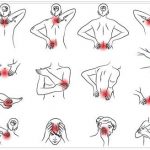Disorders of nasality are hyper- or hyponasality and manifest themselves accordingly in open or closed nasality. In addition to organic causes such as inflammation, cleft formation or tumors in the mouth and throat area, functional causes can also be responsible for a nasal dysfunction. Therapy consists of causal treatment and practicing therapy steps to direct the articulation airflow.
What is a nasality disorder?
So-called nasals are sounds with a special articulation. With oral sounds, the back and soft palate migrates more or less closely to the back of the throat, where it closes the nasal cavity. The opposite is true for nasal sounds. The articulation of nasals requires an oral closure in which the velum descends. See photionary for Leriche Syndrome 101.
This means that most of the air flows out of your nose. The resonance space for articulation is the nasal cavity and the oral cavity up to the point of oral closure. In German there are only a few nasals, such as the M and N. An acoustically audible deviation from the physiological nasality when articulating a nasal is referred to as a nasality disorder.
The terms rhinolaly, rhinophonolalia, rhinophony, palatophonolaly, and dysglossia palatalis are synonymous terms suggesting the causes of the disorder, the effects, or the locations of the disorder. Nasality disorders include open nasality in the sense of hypernasality and closed nasality in the sense of hyponasality. Mixed nasals are relatively rare.
Causes
In hypernasality, the nasal resonance spaces experience increased involvement, typically due to organic causes such as a cleft palate. In hyponasality, these same resonant spaces experience diminished involvement, as is organically characteristic of rhinitis.
Mixed nasal passage is a combination of soft palate insufficiency and nasal obstruction. With regard to the causes of all speech disorders, a distinction is made between organic causes and functional causes. Organic causes are related to a physically manifest impairment of the soft palate and are usually due to malformations such as cleft formation.
On the other hand, paralysis of the muscles involved, injuries or tumors and other changes in the area of the nasal cavity can also correspond to the primary causes of nasality disorders. The functional causes of nasal disorders include, above all, psychological causes such as unconscious or conscious posture after operations in the area of the structures involved. The organic functions and anatomy of the area relevant to articulation are intact in functional causes.
Symptoms, Ailments & Signs
Patients with a nasality disorder suffer from a perceptually abnormal phonation in the articulation of nasal sounds. The natural physiology of their nasality is disturbed. In the case of hyponasality, the nasal sounds appear too little nasalized. Hypernasality is a nasalization that is too strong.
The disorder is particularly evident in the articulation of nasals and subsequent plosives. In general, however, the disorder can also relate to the connection between nasals and certain vowels or consonants. In some cases, all sound combinations with a nasal are affected by the changed pronunciation.
Depending on the primary cause of the disorder, different accompanying symptoms may be present. Pain, for example, cannot be ruled out in the case of primarily organic nasal disorders. In the case of primarily functional nasal disorders, there is usually no accompanying symptomatic pain.
Diagnosis & course of disease
In the diagnosis of a nasality disorder, the subjective auditory impression of nasality is used as a basic building block. The doctor or speech therapist gets an initial impression of the disorder through the patient’s spontaneous speech, checking the combinations of nasal sounds and plosives in particular.
For the Anglo-American language area, there are standardized test sets to confirm the diagnosis, such as the Gutzmann test. This test variant is based on the different velum endings in the vowels /a/ and /i/. Physiologically, the former vowel has a large opening and the latter a closure.
The Czermak plate is used to record nasal breath blowthroughs during articulation. In regions of Germany, there are standard values for nasality, with which the measured nasality is compared. In order to determine the primary cause of the nasality disorder, an organic diagnosis takes place. This diagnosis includes an examination of the oropharynx, in which the soft palate activity, the nasopharynx and the nose are assessed. The closure activity of the velum can be determined fiberoptically using transnasal endoscopy.
Complications
Due to the nasality disorder, those affected primarily suffer from a speech disorder. The nasal sounds are mispronounced and stressed, which can lead to speech problems or other communication difficulties in the patient. Furthermore, the nasality disorder can also lead to teasing or bullying if this complaint occurs at school or at a young age in the person concerned.
Usually there is no pain. The disease itself is treated causally, so that the further complications and the further course of the disease depend heavily on the underlying disease. However, the symptoms can be limited in most cases. Not infrequently, the nasality disorder can also lead to depression or other psychological complaints, so that the patients are dependent on psychological treatment.
The correct pronunciation can be learned through various therapies, so that further complications can be avoided. This disease does not require medication. In some cases, however, surgical interventions are necessary to remedy the symptoms of the nasality disorder. The life expectancy of those affected is also not affected or reduced by this disease.
When should you go to the doctor?
Consultation with a doctor is necessary as soon as abnormalities and peculiarities of the language become apparent. Changes in pronunciation, tone of voice, or clarity of speech are causes for concern. If there is sudden indistinct vocalization, a doctor should be consulted. Since the cause of the symptoms in some patients can be a serious illness, a doctor should be informed of the observations at the first sign of an irregularity. If there are changes in the flow of saliva or disturbances in the act of swallowing, it is necessary to consult a doctor. Respiratory limitations or changes in breathing technique due to existing problems need to be evaluated and treated.
If the symptoms occur during the natural growth and development process of a child or young person, malpositions can be the cause. A doctor should be consulted to clarify the background. If speech delays are noticed or if speaking is avoided completely, these are signs of a health impairment.
Behavioral problems or personality changes can also indicate a disagreement. If you withdraw from social life, if you have aggressive or depressive tendencies, you should therefore ask a doctor for help. Those affected often change their communication channels so that the complaints remain as unnoticed as possible by those around them.
Treatment & Therapy
In the case of nasal disorders with organic causes, the focus of treatment is on causal therapy. As long as the cause can be eliminated, the nasality disorder can also be cured. The elimination of the cause can, for example, correspond to the excision of tumors or the correction of a malformation. The elimination of the organic damage is done with an operation where necessary.
For this purpose, for example, closure operations of gap formations are available. Septumplasty and shell caustics are also possible. In some cases, there is a promising surgical option with a surgical reduction of distance between the velum and the posterior wall of the pharynx.
The corresponding operation is also known as velopharyngoplasty. In the case of functional nasality disorders and accompanying organic therapies for organic nasality disorders, rehearsal therapy methods are used. In these practicing procedures, the patients learn to normalize a pathological air flow control and to approach the physiologically intended nasality.
Outlook & Forecast
A nasal dysfunction can be treated surgically and therapeutically. As part of the therapy, the ability to speak is improved through targeted training. If this happens early, the prognosis is good. Activation of the soft palate muscles and targeted training of speaking breathing are usually sufficient to improve speaking ability sufficiently. The child can then speak and be understood again without any problems. An accompanying operation is also positive in most cases.
The cause of the nasal disturbance is decisive for the course of the disease. If it occurs as part of a cleft lip, jaw and palate or similar malformations, these must first be treated. There is basically no danger to life for the affected children. Life expectancy is not reduced either. The quality of life can be reduced due to the poor ability to speak. However, the therapy measures mentioned are effective and always bring about an improvement in the condition.
The responsible speech therapist or pediatrician provides the exact prognosis. Other specialists can treat the causative disease and make a prognosis for this. In principle, the prognosis for a nasality disorder is therefore positive, insofar as the condition is recognized and treated at an early stage. If left untreated, the disorder persists and manifests throughout childhood.
Prevention
Nasal disorders of a habitual functional nature can be prevented, for example, by not adopting a relieving posture after operations or trauma. Organically caused nasal disorders can only be prevented to the extent that preventive measures for tumors, inflammation and malformations of the oropharynx are available.
Aftercare
In the case of a nasality disorder, in most cases the affected person has only very few and usually only very limited measures and options for aftercare. For this reason, the affected person should consult a doctor as early as possible in order to prevent the occurrence of other complications or symptoms. The earlier a doctor is consulted, the better the further course of the disease, so that a doctor should be contacted as soon as the first symptoms and signs appear.
As a rule, a surgical intervention is necessary for a nasality disorder, which can permanently and completely limit the symptoms. Those affected should definitely take it easy and rest after such an operation. Bed rest is also required. Furthermore, many of the patients are dependent on the help and care of their own families due to the nasality disorder.
This can also prevent depression and other mental upsets. Contact with other people affected by the nasality disorder can also be useful and lead to an exchange of information, which can make everyday life easier for those affected. The disease itself does not reduce the patient’s life expectancy.
You can do that yourself
In the case of a nasality disorder, the person affected can train and improve their vocalization through targeted speech exercises in addition to medical treatment. Exercise units can be developed and discussed together with a speech therapist, which the patient carries out independently and independently at regular intervals. This promotes self-awareness, supports correct breathing when making sounds and leads to an optimized exchange with other people.
Technical aids can be used to support better communication in everyday life. Speech computers, apps, various writing techniques or sign language can be used in contact with fellow human beings. They often make it easier to get along with each other. Building up your own self-confidence is particularly important. Despite the adversities caused by the nasality disorder, the person affected should by no means allow themselves to be negatively influenced by what other people say. It is important to provide comprehensive information about the disease and to provide information to people in your social environment. This avoids misunderstandings and prevents possible discrepancies.
An exchange with people who cannot or only partially speak leads to new insights for many of those affected and makes it easier to deal with the disorder. A dialogue about experiences in everyday life is perceived as helpful and supportive in mutual contact. Tips from people around you for changing your own behavior can also be useful.








